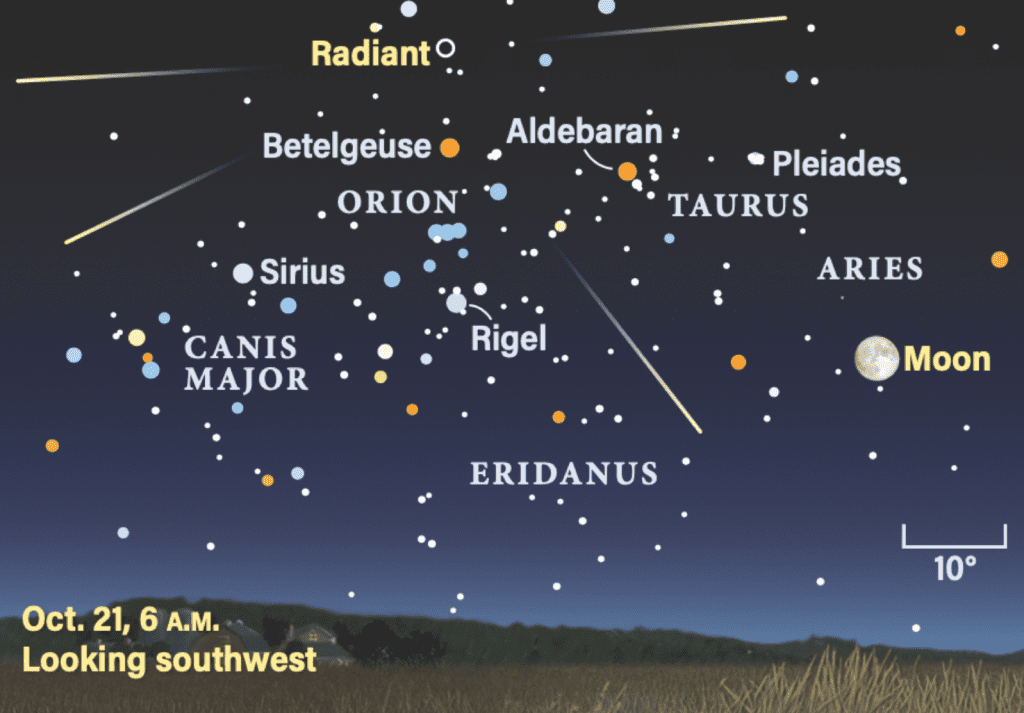Daniel Salzler No. 1120
EnviroInsight.org Five Items October 22, 2021
—————Feel Free To Pass This Along To Others——————
If your watershed is doing something you would like others to know about, or you know of something others
can benefit from, let me know and I will place it in this Information newsletter.
If you want to be removed from the distribution list, please let me know.
Please note that all meetings listed are open.
Enhance your viewing by downloading the pdf file to view photos, etc. The
attached is all about improving life in the watershed. If you want to be removed from
the distribution list, please let me know. Please note that all meetings listed are open.
Enhance your viewing by downloading the attached pdf file to view photos, etc.
The attached is all about improving life in the watershed.
Read this newsletter at EnviroInsight.org
1. Lakes Are Changing Worldwide: Human Activities To Blame
October 18, 2021
Source: Vrije Universiteit Brussel
Summary:
Worldwide, lake temperatures are rising and seasonal ice cover is shorter and thiner. This effects lake ecosystems, drinking water supply and fishing. International research now shows that these global changes in lake temperature and ice cover are not due to natural climate variability. They can only be explained by massive greenhouse gas emissions since the Industrial Revolution. To demonstrate this, the team has developed multiple computer simulations with models of lakes on a global scale, on which they ran a series of climate models. The researchers found clear similarities between the observed changes in lakes and model simulations of lakes in a climate influenced by greenhouse gas emissions. Besides measuring the historical impact of climate change, the team also analyzed various future climate scenarios. Read more at https://www.sciencedaily.com/releases/2021/10/211018112456.htm
2. U. S. Lake With The Longest Name. In the United States, all lakes, rivers, streams, creeks and natural ponds are named and categorized by local, state or Federal Government.
The U.S. Lake with the shortest name is one of the Great Lakes, Lake Erie. The lake with the longest name is in Webster, Massachuttes. The name is 45 letters long and though many today know it as Lake Webster, the original name is Lake Chargoggagoggmanchauggagoggchaubunagungamaugg.

The lake has been known, from early times, by various names such as Chabanaguncamogue, Chaubanagogum, and Chaubunagungamaug. Historians agree that all these names bear the same meaning – “Fishing Place at the Boundary” (near the border of Connecticut). For this great pond (has a surface area of 1,442 acres), divided by narrow channels into three larger bodies of water, was famed throughout the area and was the central gathering place for the Nipmuc Indians and their friends. Source:https://en.wikipedia.org/wiki/Lake_Chaubunagungamaug
3. Astroshed…..What’s Up There In The Night Sky? Against the backdrop of a Full Moon, two planets stand still and the Orionid meteor shower peaks from October 15 to 22.

Wednesday, October 20
Full Moon occurs at 10:57 A.M. EDT. October’s Full Moon is often called the Hunter’s Moon. And it’s the perfect time to return to the crater Aristoteles in the lunar north.
Observing the Full Moon with a telescope can be a bit eye-watering, but pop in a filter or bump up your magnification to cut down on the amount of light traveling through your scope and into your eye. Do note that even then, your night vision will suffer, so if you plan to do any other observing, you might want to get it in before you swing your gaze to the Moon.
Once you’ve got Aristoteles and its neighbor Exodus in your sights, compare them to the image above, taken at a different Sun angle, to see how a few days can completely change the look of the lunar surface. Now, the Sun is high overhead, and Aristoteles looks like an oval of light-colored material near circular Exodus. Any small secondary craters visible around Aristoteles last week are now gone, washed out of view until the Sun starts to set from the opposite direction.
Sunrise: 7:16 A.M.
Sunset: 6:13 P.M.
Moonrise: 6:31 P.M.
Moonset: 7:08 A.M.
Orionid meteor shower
The Orionids’ radiant in northeastern Orion rises after 10:30 P.M. local time.

Thursday, October 21
The Orionid meteor shower peaks today, but the fainter meteors will have a hard time contending with the still-bright Moon. Our satellite will unfortunately bump down the number of shooting stars you’ll see from the shower’s maximum expected rate of 20 meteors per hour at peak.
Still, if you want to try your luck, the shower’s radiant, which sits 10° north of Betelgeuse in Orion the Hunter, rises around 10:30 P.M. local time this month. But your best bet is to step outside early this morning, when the radiant is 65° high two hours before sunrise and the Moon is several constellations away in Aries. The shower will remain active for another week and a half, but rates will drop dramatically after today’s peak passes.
Still, if you want to try your luck, the shower’s radiant, which sits 10° north of Betelgeuse in Orion the Hunter, rises around 10:30 P.M. local time this month. But your best bet is to step outside early this morning, when the radiant is 65° high two hours before sunrise and the Moon is several constellations away in Aries. The shower will remain active for another week and a half, but rates will drop dramatically after today’s peak passes.
Speaking of the Moon, our satellite passes 1.3° south of Uranus at 6 P.M. EDT. The pair rise around 7 P.M. local time, now just over 2° apart in eastern Aries the Ram. Uranus, which is often visible to the naked eye under clear, dark skies, will definitely need some optical aid to spot tonight. Its magnitude 5.7 glow will be lost in the glare of the Moon’s bright light, but you may pick it up with binoculars or a telescope, sitting northeast of the Moon and 11.7° southeast of Aries’ alpha star, Hamal.
Sunrise: 7:17 A.M.
Sunset: 6:11 P.M.
Moonrise: 6:56 P.M.
Moonset: 8:09 A.M.
Friday, October 22
There’s a dark window tonight between sunset and moonrise when you might be able to catch sight of some of the sky’s fainter objects. Let’s seek out the Owl Cluster (NGC 457), an open cluster in Cassiopeia the Queen that bears a resemblance to the bird for which it is named. (Of course, amateur astronomers are quite creative and this cluster has several other names as well, including the E.T. Cluster and the Kachina Doll Cluster.)
Sunrise: 7:19 A.M.
Sunset: 6:10 P.M.
Moonrise: 7:24 P.M.
4. OSHA 8 Hr. Person to Person Refresher Class. If you have had your Covid shots and need an 8 hour refresher, contact Dan at 623-930-8197. The class will run from 8:00 a.m. to 4:00 p.m. on November 1st. Cost is $80 and there is a free lunch. Please register by October 30.5. In The “Water World,” AZ’s New Year’s Starts October 1, since the water year extends from October through the following September to give “water wonks” (those folks who are really into hydrology!) a look at the year’s snowpack and runoff. So, Water Year 2021 has just ended and now it’s on to Water Year 2022.
Sunrise: 7:17 A.M.
Sunset: 6:11 P.M.
Moonrise: 6:56 P.M.
Moonset: 8:09 A.M.
Friday, October 22
There’s a dark window tonight between sunset and moonrise when you might be able to catch sight of some of the sky’s fainter objects. Let’s seek out the Owl Cluster (NGC 457), an open cluster in Cassiopeia the Queen that bears a resemblance to the bird for which it is named. (Of course, amateur astronomers are quite creative and this cluster has several other names as well, including the E.T. Cluster and the Kachina Doll Cluster.)
Sunrise: 7:19 A.M.
Sunset: 6:10 P.M.
Moonrise: 7:24 P.M.
4. OSHA 8 Hr. Person to Person Refresher Class. If you have had your Covid shots and need an 8 hour refresher, contact Dan at 623-930-8197. The class will run from 8:00 a.m. to 4:00 p.m. on November 1st. Cost is $80 and there is a free lunch. Please register by October 30.5. In The “Water World,” AZ’s New Year’s Starts October 1, since the water year extends from October through the following September to give “water wonks” (those folks who are really into hydrology!) a look at the year’s snowpack and runoff. So, Water Year 2021 has just ended and now it’s on to Water Year 2022.
5. In The “Water World,” AZ’s New Year’s Starts October 1, since the water year extends from October through the following September to give “water wonks” (those folks who are really into hydrology!) a look at the year’s snowpack and runoff. So, Water Year 2021 has just ended and now it’s on to Water Year 2022.

So, how did the 2021 Water Year shape up?
- Winter 2020-2021 resulted in a below-average snowpack
- Spring 2021 runoff into Lake Powell was abnormally low (26% of the 30-yr average), the second lowest on record
- Summer 2021 continued hot and dry across the Upper Colorado River watershed
- There was significant monsoon precipitation across Arizona, Nevada and southern Utah, which provided some minor inflow to Lake Mead
- The very low inflows contributed to significant depletion of storage in Lake Powell, which will impact releases to Lake Mead in Water Years 2022 and 2023, increasing the risk of deeper shortages to Arizona in the coming years
Take at a look at our animation for a look at the 2021 Water Year in review. Go to https://knowyourwaternews.com/happy-new-water-year-heres-an-animated-look-at-last-year/
Copyright EnviroInsight.org 2021
